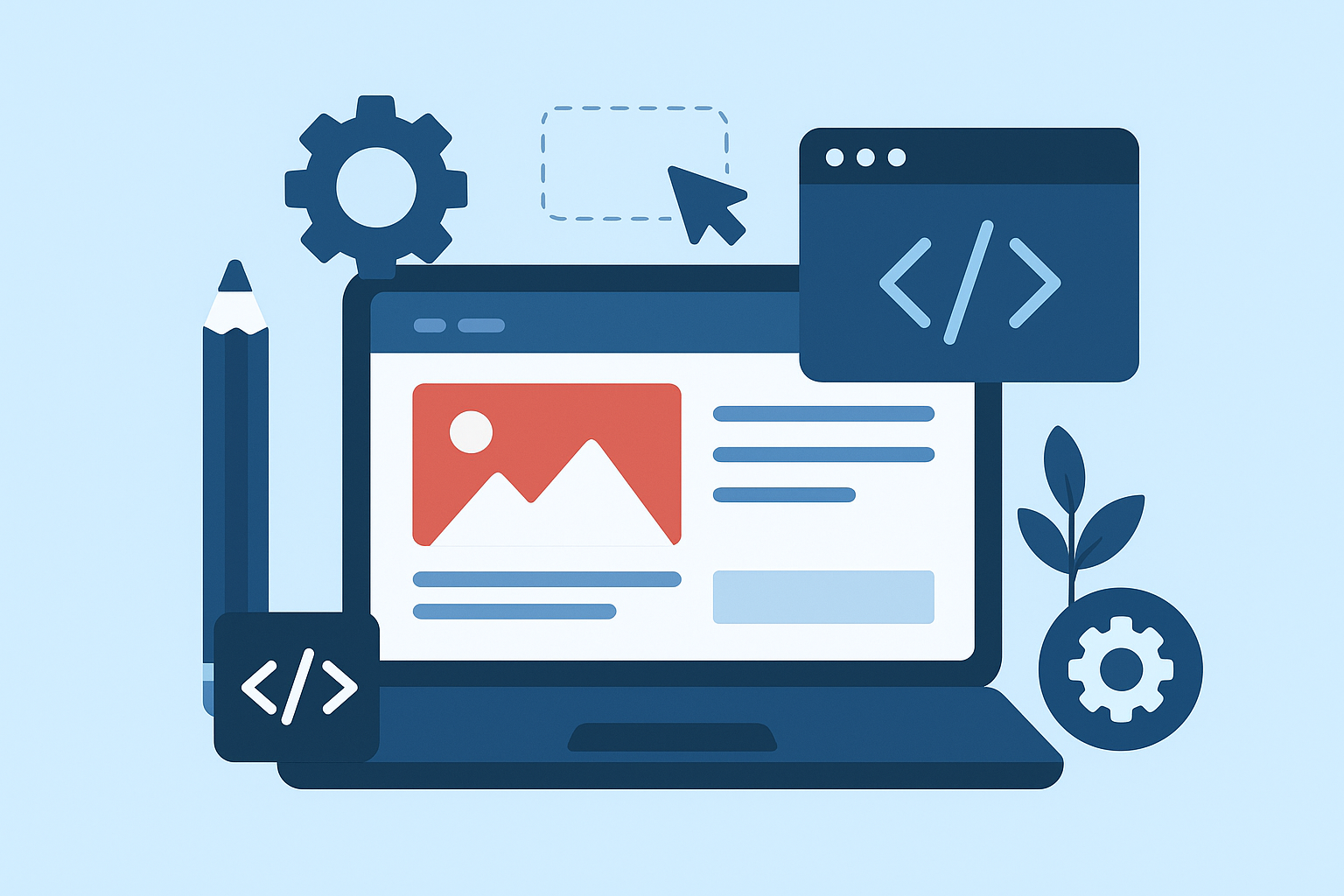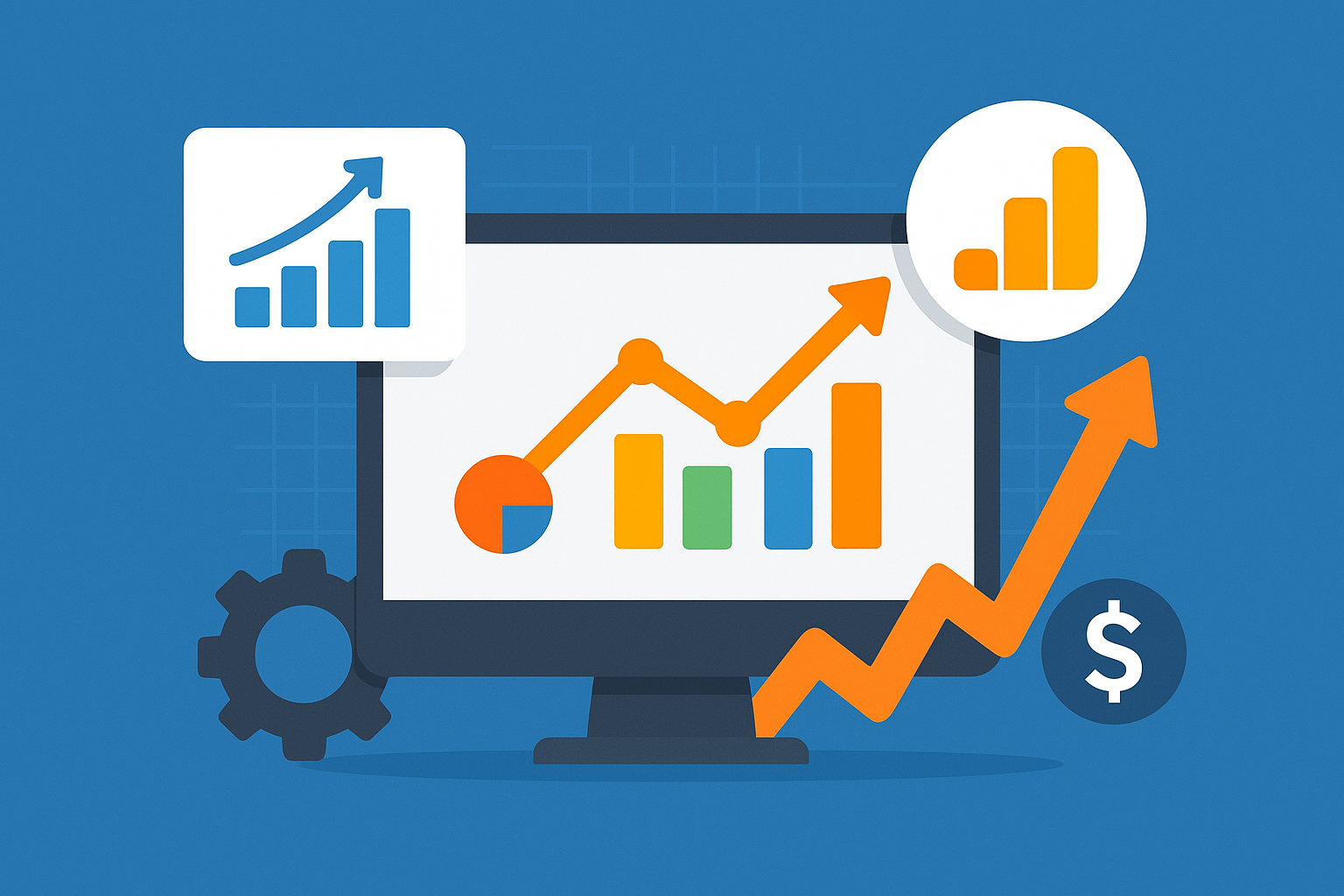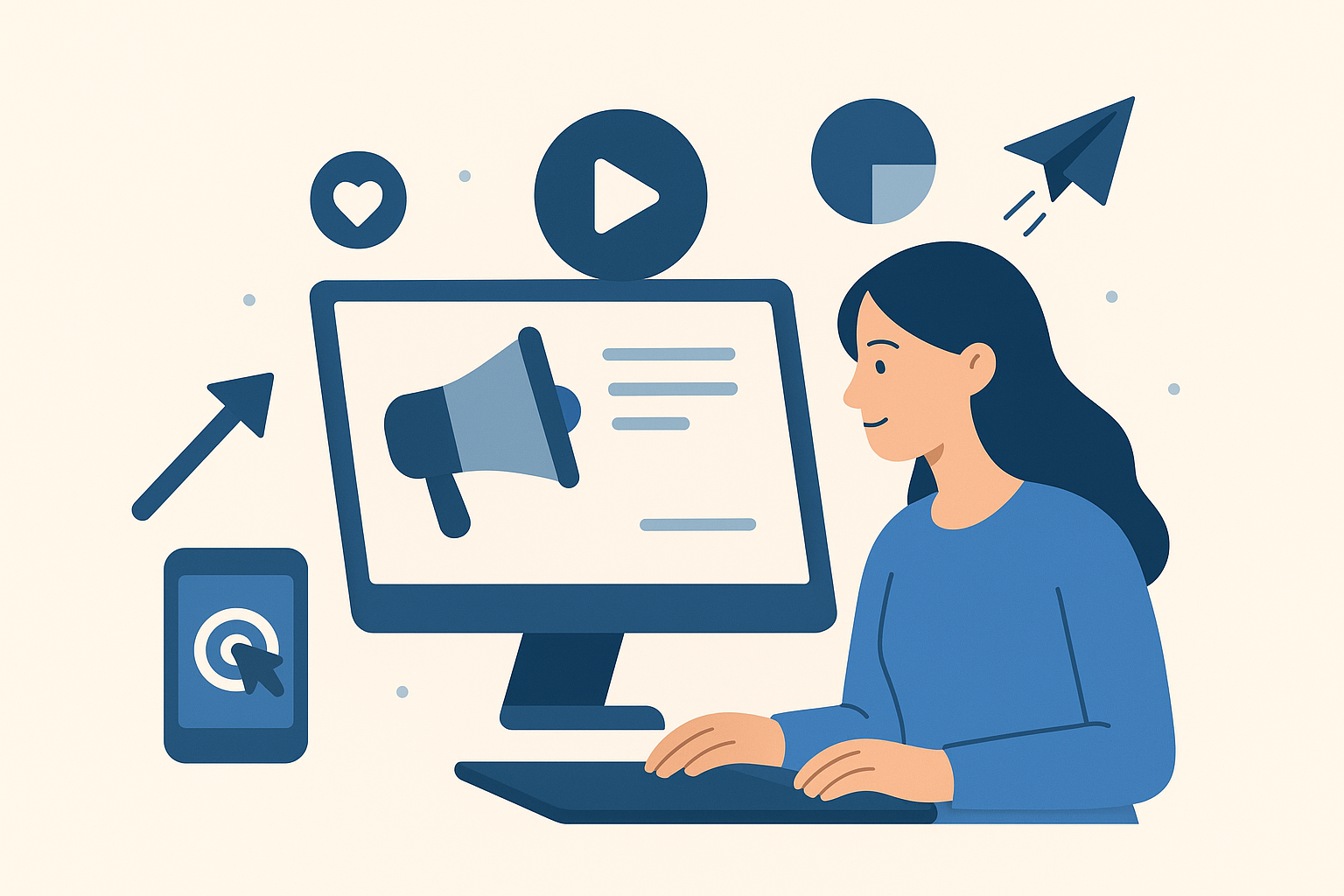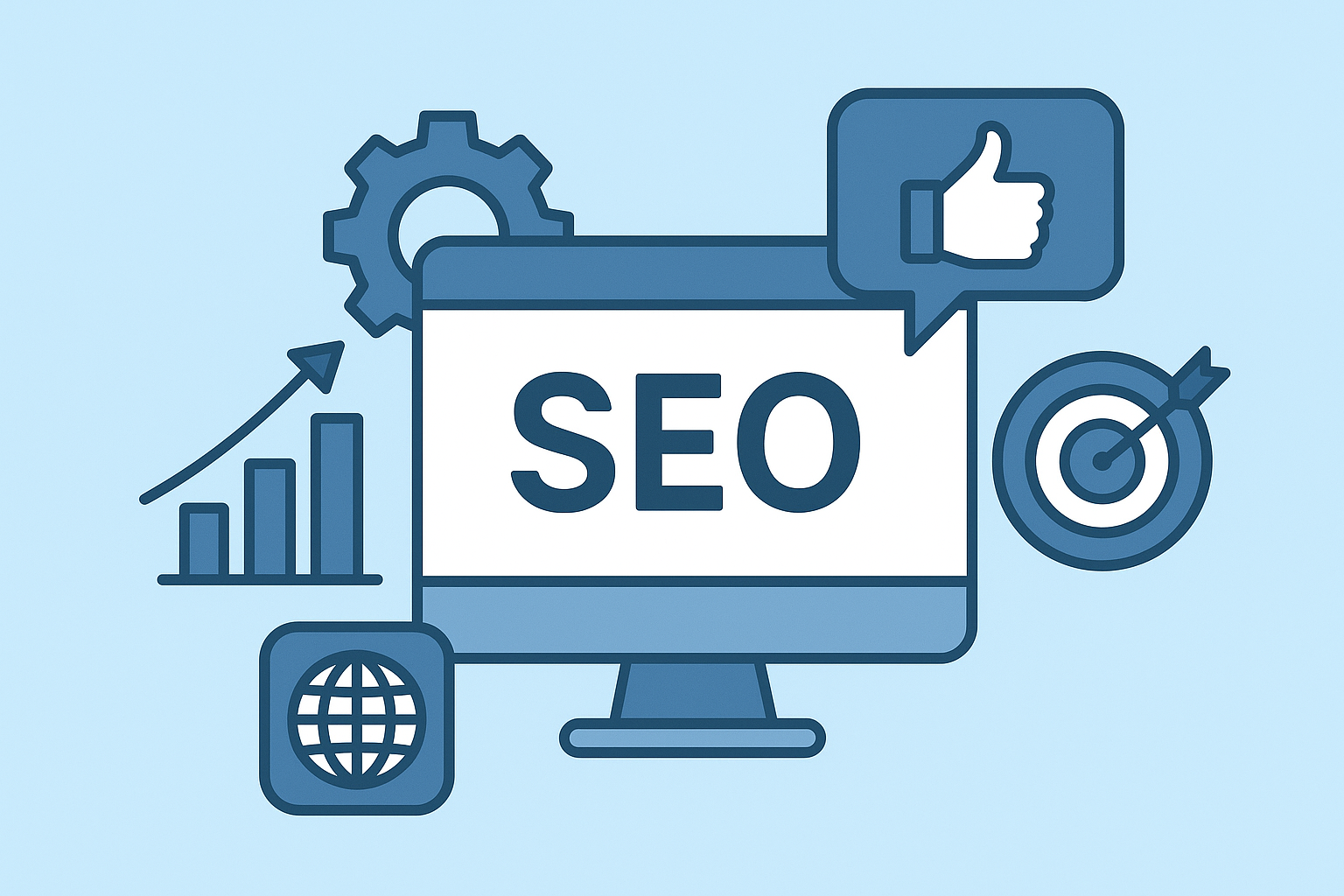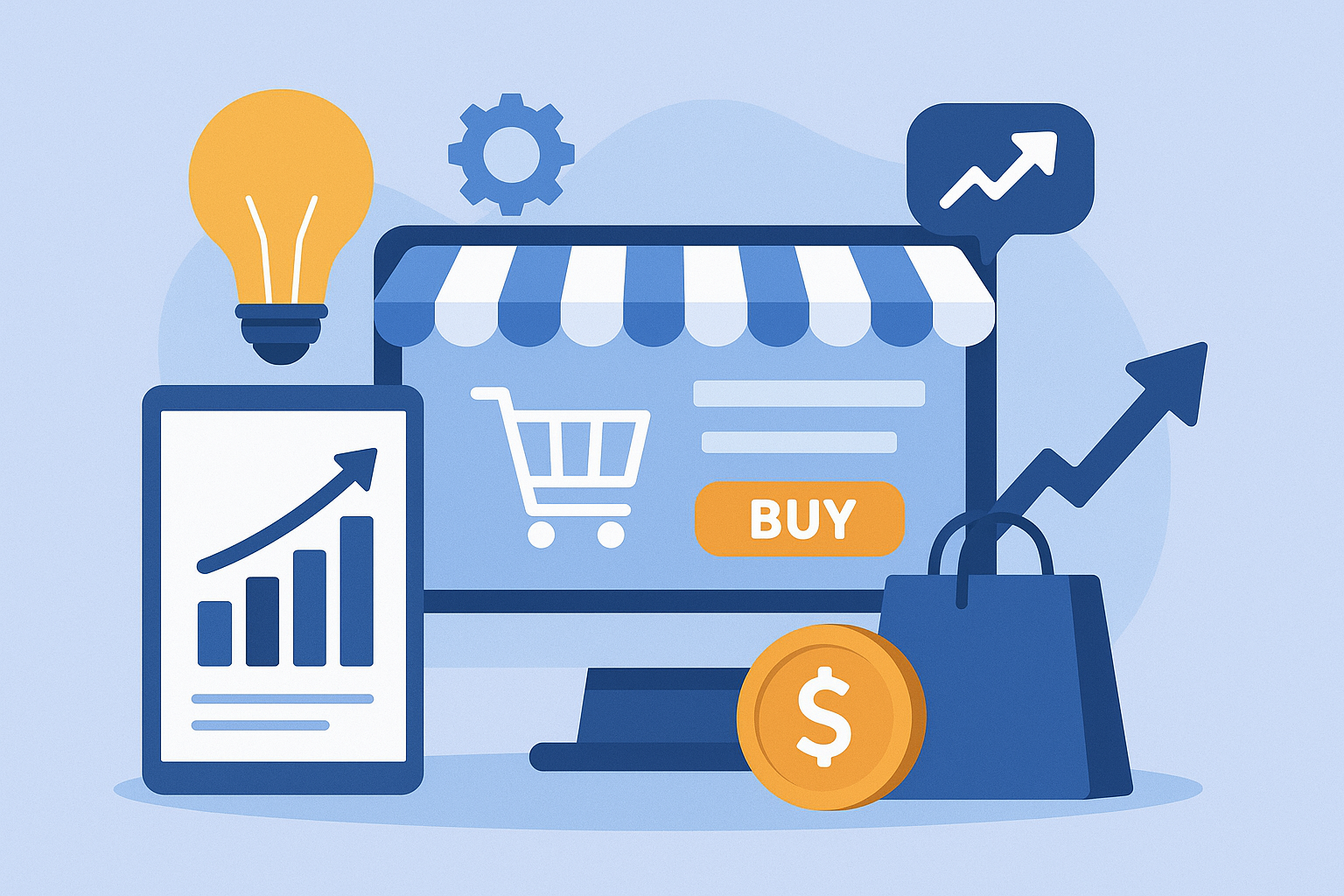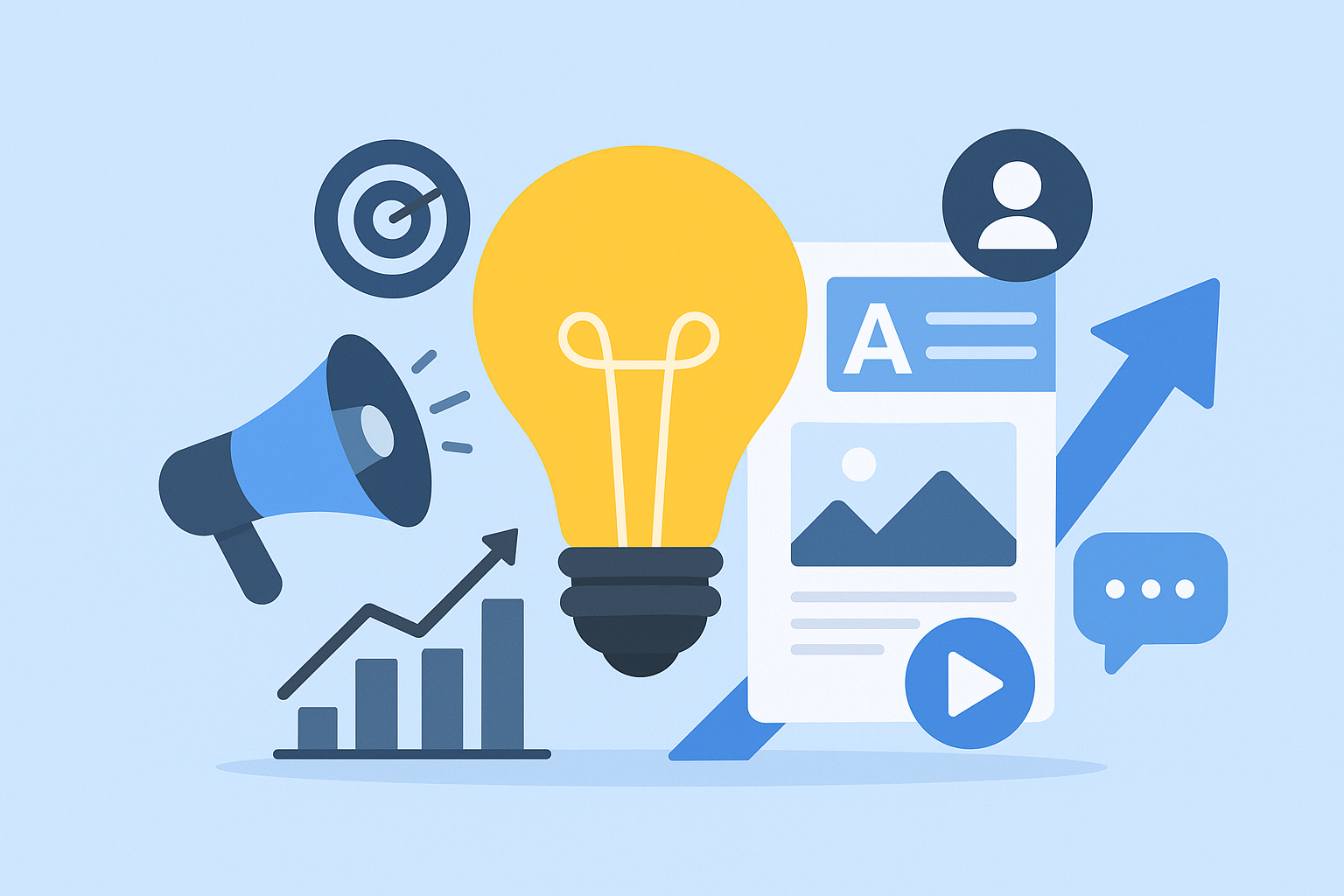Top 9 Best Inbound Marketing Strategies and Tactics for 2022
Recent Blog
Digital Marketing Mastery: Transforming Your Brand in the Modern Era
Effective Content Marketing Strategies to Grow Your Business in 2025
Grow Your Business Online with Appledew
Unlock powerful websites and sales funnels built to convert, with zero upfront costs. Let’s bring your vision to life and drive real results together.

Top 9 Best Inbound Marketing Strategies and Tactics for 2022
The best inbound marketing strategies for faster growth.
Inbound marketing strategies and tactics help create predictable and repeatable streams of new leads, customers, and revenue.
This article gives B2B companies incredibly actionable inbound marketing strategies that you can quickly implement into your best B2B inbound marketing campaigns today.
Below is a scalable playbook for improving the effectiveness of your company’s inbound marketing strategy – examples of converting more website traffic into lead form submissions through content personalization and proactive conversion experiments. Refining your company’s inbound marketing strategy can significantly improve your business.
Inbound marketing strategies focus on creating high-quality content that naturally attracts customers rather than bombarding them with ads and emails.
The effectiveness of inbound marketing is to attract customers who are an ideal fit for you through 33% relevant, personalized, and valuable content instead of leading to more repeatable pushy sales strategies.
Inbound advertising and marketing is a long-term strategy that constructs rely on connections 27% faster instead of trying to make a sale as promptly as viable.
Inbound marketing expenses are 18% less than conventional outbound advertising and marketing methods and usually organic rankings.
What is an inbound marketing strategy?
Inbound advertising best practice ideas and B2B marketing strategies focus on a scalable and repeatable playbook for using inbound marketing best practices to capture the interest of ideal buyers for your website, convert website traffic into leads, and ultimately convert those leads into customers.
The best inbound marketing strategies are one of the most important things your business should measure. Measuring conversion rates based on data-driven decisions can be done on a weekly or monthly basis in many cases to get an idea of how much of your website traffic is converting into a signup form.
When creating a scalable B2B inbound marketing strategy for SaaS or professional services companies, one must consider the following points.
- What is inbound advertising, as well as exactly how does it function?
- The benefits of incoming advertising
- Methods for applying an inbound advertising and marketing method
- Examples of successful inbound advertising projects
- How to measure the success of your incoming advertising and marketing initiatives
Inbound Marketing VS Outbound Marketing
Inbound marketing aims to attract customers to your product or service through interesting, informative content. That can include blog posts, eBooks, infographics, or helpful tips and advice. Once you’ve captured a customer’s attention, you need to convert them into prospects by getting them to enroll in your e-newsletter or download and install an e-book. Lastly, you must close the sale by convincing the customer to buy your product or service.
In contrast, outbound marketing pesters potential customers with promotional messages to get their attention. Can do this through cold calling, email advertising, or even traditional advertising such as television commercials. While outbound advertising and marketing can be reliable sometimes, it is usually much less efficient than inbound marketing. Inbound advertising and marketing are much more targeted and reliable, with prices considerably less. Because of this, it is the favored selection for many organizations today.
The most crucial factors to consider when weighing inbound versus outbound methods:
- What is inbound advertising, and what is outgoing advertising and marketing?
- The benefits of inbound advertising over outgoing marketing.
- How to create a reliable incoming advertising strategy
- The challenges of inbound advertising
- The benefits of outbound marketing over incoming advertising and marketing
- How to establish a practical outbound advertising approach
While some companies continue to find success with B2B outbound marketing tactics and strategies, the ROI for inbound marketing continues to decline. However, it has not yet dropped to the point where everyone would have to abandon old-fashioned methods like television advertising and cold calling completely.
Still, savvy B2B marketers emphasize inbound marketing and invest more resources in inbound marketing than outbound marketing. Defining inbound marketing ideas turns the tables on traditional marketing methods by attracting customers and leading them to you, rather than going out, spreading your message, and hoping to capture their attention.
Effective inbound marketing strategies will help your company identify the friction within your ICP and align your messaging with the solution architecture that can drive systems to reach the ideal state. The idea is to create persona- and ICP-driven content for each stage in the Customer’s Journey, each focused on a keyword that serves the corresponding intent. If you do this right, your ideal customers are already searching for what your business specializes in.
Even if you’ve already implemented an inbound approach into your B2B marketing strategy, it’s helpful to remain on top of the latest research and trends to ensure your approach is as practical as possible and continually optimized to meet your ROI goals. Sometimes, a free inbound marketing ROI calculator is helpful to manage expectations for your inbound marketing efforts.
The flywheel, pioneered by HubSpot co-founder Brian Halligan, is a dynamic framework for attracting, retaining, and thrilling clients. Implementing your inbound advertising and marketing best method strategy right into the flywheel structure will undoubtedly increase the development of your little or large organization. In addition, 2022 marketers are abandoning the outdated marketing funnel format and adopting the more appropriate flywheel structure.
We have broken down the process of accomplishing success with your B2B incoming marketing most delicate practice technique into the 3 phases of the flywheel: Drawing in the ideal audience, converting site visitors right into leads, and nurturing introduces clients.
The 14 best inbound marketing strategies and tactics
Outbound ways, such as billboards or television commercials, cast a wide net in hopes of attracting the attention of potential customers. The inbound method is a more targeted approach.
The first phase of your inbound strategy is to use the best inbound marketing platforms, such as HubSpot, to attract visitors to your website so they can learn more about your offering and allow you to convert them into marketing-qualified leads that will be handed off to your sales team.
Attracting visitors starts with assessing the current status of your marketing efforts, knowing what makes a potential customer for your business, creating content that targets that buyer persona, and then positioning that content to reach them.
1. Covertly review inbound content
Before you develop your strategy for attracting potential customers and driving traffic to your website, evaluate your key performance indicators (KPIs) and the methods you’re already using to determine what’s working for you and what may be against you. That is typically referred to as an inbound content audit to measure the effectiveness of your content marketing efforts.
A content audit starts with a general inventory to capture your company’s different resources to drive organic search traffic more effectively. You and your group can review the KPIs gleaned and recorded from your existing SEO link building, content technique, paid search, and other inbound strategies.
Below is a list of the critical data points you should collect to review your technical SEO performance.
- Title of the page
- Target keyword
- Meta description
- Page headings used
- Incoming links
- Images present
- Image ALT tags
- Date of the last update
- Page visits (measured for at least three months, if possible)
- Page entrances and exits
- Page bounce rate
- Average time spent on the page
- Broken links
The below list is one of the most critical data you should collect to review your content marketing performance.
- Number of words
- Type of web content (article, blog post, informational page, landing page, infographic, etc.)
- Condition of the content (outdated, green, etc.)
- General topic
- Assigned tags or categories
- Author
- The content owner (i.e., who is responsible for editing the content)
- Number of comments
- Number of social shares
- Accessibility on desktop and mobile devices
- Call to action
- Associated stage of the sales funnel
- Link-building strategy
- Conversion data
A content inventory and audit will clearly show where your previous inbound strategies have positively and negatively impacted your ROI. With a comprehensive understanding, you can implement new strategies to improve your SEO performance, content performance, and overall customer experience.
You can also conduct a campaign audit. That will take a more detailed look at the performance of your past campaigns to evaluate the results of the content and messaging you used. A campaign edit will help you determine which should rescue strategies and goals should – and which are no longer needed.
2. Define your ideal customer profile
Any successful B2B inbound marketing strategy starts with thoroughly understanding your target audience. To attract prospects to your website, build a relationship with them, and ultimately turn them into customers, you must first understand their needs, challenges, and goals.
So what makes an ideal customer profile?
Here are crucial vital elements you should consider
- Demographics: How old is your ideal customer, what gender are they, where do they live, etc.?
- Psychographic data: What are your ideal customer’s interests, values, and beliefs?
- Habits: What does your ideal customer do daily? Where does he spend his time online?
- Needs: What does your ideal client need from a product or service like yours?
If you take the time to respond to these questions, you’ll be well on your way to defining your ideal customer’s profile. From there, you can start developing targeted content that will assist you in nurturing your inbound leads and closing more sales. The initial step of your inbound strategy should be to define your ideal customer profile or ICP. An ICP is a business (for B2-B businesses) that would benefit the most from using your product or service. It is someone who has a problem you have a solution for and is most likely to become a customer.
It is also essential to understand the persona of your target customers. A buyer persona is a semi-fictional representation of a person within an organization to whom you want to sell your services and who is a decision maker or influencer. Can define this persona by determining the title, role, demographics, goals, motivators, pain points, and experience level/knowledge of this specific customer.
Outsourced inbound marketing lists are based upon the premise that people are searching for what you offer. What are their concerns and questions, and how do they relate to your offering? What are their problems, and how can you help them? Mapping content along the Buyer’s Journey is critical to ensure your team has the proper conversation in the buyer’s process at the right time.
The better you understand your ideal customers, buyer personas, and challenges, the greater your chance of success.
3. Website experience effectiveness
For a practical website experience, you need a well-thought-out inbound marketing strategy. That means having a plan for how visitors will interact with your site and what type of content you want to provide. That includes a user-friendly design that makes it easy for visitors to find what they’re looking for.
Finally, you must promote your website so visitors know it exists. Without these components, your website is likely ineffective and may even scare off potential customers. By developing a solid inbound marketing strategy, you can ensure that your website is an enjoyable and informative experience for all visitors.
Before attracting visitors, your website must be appealing and easy to navigate. If your website isn’t working as a practical companion to attract, involve, and joy potential customers, it’s time to redesign it.
A pleasant website experience is critical to keeping users engaged with your content. If you know your ideal customer and what they’re looking for, you can design a website that appeals to their needs and interests.
An engaging website experience can have a positive impact on your overall lifecycle marketing:
- More leads and conversions through a better website experience.
- More time is saved through faster loading pages and an intuitive design
- Better customer engagement through easy-to-navigate menus and user-friendly design
- Improved brand recognition through an updated design that reflects your company’s values
If you pay attention to details and ensure your website is easy to navigate, users will keep coming back. In today’s competitive market, ensuring your website gives users the best experience possible is more important than ever.
You can better retain your customers by taking the time to design a user-friendly and engaging website.
4. Mobile-friendly websites
You need to make your website – and your blog – mobile-friendly. More than ever, internet search queries are being made through mobile devices. Most internet queries come from mobile devices – not desktop devices like PCs and laptops. So to appeal to the majority, your websites should be accessible and easy to use on smartphones and other pocket devices.
- More leads and conversions: A mobile-friendly website provides a more user-friendly experience that leads to more conversions. Businesses with mobile-friendly websites see a 104% boost in leads from organic search.
- Higher website ROI: With a mobile-friendly website, you can achieve a higher ROI for your marketing campaigns because visitors are more likely to convert.
- Improved brand awareness: With a mobile-friendly website, you show your commitment to providing the best customer experience, which increases brand awareness among potential customers.
- Improved website usability: When users navigate your website on their phones or tablets, they need to have an easy and enjoyable experience.
Mobile websites are more popular than ever. They allow consumers to get the necessary information without hassle or confusion, increasing satisfaction and revenue!
Many people utilize their mobile devices to access the Internet, and it is becoming increasingly crucial for businesses to have mobile-friendly websites. Mobile-friendly websites make it most uncomplicated for users to navigate and find the data they need, whether searching for directions, contact information, or product details.
In addition, mobile-friendly websites are often faster and easier to load than traditional desktop websites, which is essential in today’s fast-paced world.
Finally, mobile-friendly websites can help businesses improve their inbound marketing techniques. By making it simple for prospective clients to locate and utilize your site, you can motivate them to act, such as registering for your e-newsletter or buying. In today’s progressively mobile world, a mobile-friendly site is a valuable asset for any business.
5. Create persona-related content to attract visitors
While great content isn’t the only important aspect of inbound marketing, it is the cornerstone of the strategy. Without high-quality, relevant, and up-to-date content, it will be challenging to succeed with inbound marketing. And the bar for sound quality is getting higher. It’s no longer okay to produce mediocre content.
- Drive website traffic by creating content that is tailored to your target audience.
- Draw in leads and convert them into customers by offering beneficial information they are trying to find
- Reinforce partnerships with existing customers by delivering the content they want
- Stand out from your competitors by giving unique and relevant content.
Consumers and search engines are getting smarter. You need to create and publish excellent, constantly helpful content explicitly tailored to the customers you want to reach. In many cases, the success of your content marketing in converting traffic into customer leads depends on the value proposition outlined in your content marketing efforts.
Suppose you don’t concentrate on creating targeted and compelling content. Often, companies start by assigning a low-level employee to create content without experience writing about the problems specific buyer personas face. The result is that the content performs poorly. In that case, your clients are unlikely to find you, or if they do, they may click on it after realizing the limitations of your offering.
Conversely, working with B2B marketing agencies specializing in inbound marketing can help create persona-specific content at scale for your blog and content download offers.
If you’re struggling to produce the quality content you need, diversify your offerings. Persona blogs are still accessible and powerful for creating and publishing content.
6. Pillar pages and blog content
Google loves fresh content. Creating persona-focused content on pillar pages that address your ideal customer’s problems is critical to converting blog readers into qualified customers. If your marketing content isn’t addressing your ideal customer, try HubSpot’s free Buyer Persona Generator and have those buyer persona data points incorporated into your older blog posts.
Among the many facets of content creation, videos, articles, and blog posts are infinitely more effective forms of advertising over many years in contracts with search ads, video ads, or paid online retargeting ads.
Quality content ultimately assists in some way, such as providing workable pointers or relevant insights that include worth to the reader. The more your web content motivates, intrigues, or helps visitors, the more successful your content will be in converting website visitors into marketing-qualified leads you pass on to your sales team to close.
Articles and blog posts should include infographics, videos, and images to break up written content, and should note that episodic content is particularly popular with consumers now. Below is a list of content you should include on your website blog.
- How-to guides
- Case studies
- Book summaries
- Tool reviews
- “Day in the life” post
- Listings
- Video content
7. Niche guest blog posting
The value of blog comments and profile backlinks is long gone. Not all backlinks are created equal. Some kinds of backlinks can hurt your rankings.
Guest posting or linking to other niche or prominent publications related to your company’s offerings can increase organic traffic and reach new audiences, some of whom may never have heard of your company otherwise.
When considering the best inbound marketing strategies for 2022, many marketers overlook this highly effective method for driving more traffic to a website and generating more leads and sales. The table below shows that updating old blog posts can significantly boost rankings and website traffic.
In 2022, guest posting is critical as a B2B inbound marketing strategy because it can impact nearly every aspect of your marketing plan. Guest posts can provide backlinks to your website, create brand authority, and build relationships with niche influencers.
8. Constantly test page headings
It’s often said that 50% of your time writing an article should be coming up with a compelling headline. That may sound a bit dramatic, but headlines are still essential.
A good headline must contain your chosen keywords, grab your attention, and be negated. You’re more likely to get a “click” if your headline contains words like “never” and negators like “not” than words like “always” or superlatives like “best.”
As part of any inbound marketing strategy, you must test different headlines on your web pages and determine the ones that work best. There are several factors to consider when testing headlines, such as the headline’s length, keywords, and tone of voice.
Trying different combinations of these factors can help you find the perfect headline for each page on your site. Effective headlines can increase your website’s traffic and lead to higher conversion rates. So it’s worth trying out different headlines to see which ones work best for your service.
9. Search engine optimization
Search engine optimization is a necessary facet of your approach to drawing in visitors. It positions your content to show up at the top of Google and also other internet search engines. You can rank higher with the right keywords and phrases in your content, improving organic search traffic over time.
When planning and implementing a successful B2B inbound marketing idea, it’s challenging to know what to establish first: content topics or search engine optimization (SEO). Many marketers start with the right SEO keywords and create content based on those. As readers (and search engines) get more imaginative, that’s not so simple anymore.
We must take a broader approach that creates relevant content optimized for SEO keywords. It’s no longer enough to try to rank for relevant keywords. Those keywords must lead to content that is helpful and relevant.
In 2022, it is critical to internally manage the expectation that SEO will not drive revenue on its own. For this reason, SEO and content must go hand in hand, with buyer personas guiding content development and SEO keyword research.
Then, content must be developed to answer your potential customers’ most important questions while being easy to know when potential clients are searching for solutions.
SEO is the be-all and end-all of marketing on the Internet. You’ve probably already integrated search engine optimization into your B2B inbound marketing strategy, but do you know how to maximize its effectiveness and drive organic search traffic? If you’re a new business or startup, you should focus on keywords with less competition.
While repeating keywords can help improve your website’s rankings, you should avoid keyword stuffing – a method of using keywords unnaturally and with very high frequency.
Not only does this discourage potential customers from your site, but search engines like Google have begun using software programs to ensure that you don’t rank higher using this method.
When some of us think of Pay-Per-Click (PPC), we think of traditional marketing, which sounds like it doesn’t belong in an inbound advertising strategy B2B. However, PPC can be essential to an inbound strategy to attract leads. PPC is one level of inbound because it targets people who have already visited your company’s website.
In a perfect world, the high-quality of your content and search engine optimization would ensure that you’re on the top of the search results page, but that’s not always the case. A reputable B2B PPC agency will allow you to buy your way to the top of the search results and drive visitors to your website’s content.
Consider these paid ads, which can appear on social media platforms like Facebook and Instagram, as a follow-up to your inbound marketing.
Inbound marketing strategy – tips and tricks
The inbound marketing strategy insights we’ve looked at can help any business, regardless of dimension. You can see a favorable role in your inbound marketing efforts by recognizing your customer persona and producing relevant, appealing material.
If you don’t have the time or resources to do this, contact an inbound advertising and marketing firm that recognizes your needs and can aid you in success. Thanks for joining us on this journey with the world of inbound advertising and marketing! We hope these insights are practical as you continue to work to attract leads and convert them into customers.
- Ahead of 2022, the paradigm shift away from traditional outbound methods is happening faster than most marketers expected because they are disruptive and ineffective.
- Be sure to consider the following three key objectives when implementing an effective inbound marketing strategy:
- Convert website visitors into leads with efficient lead capture forms and content offers.
- Nurture these leads with automated email marketing that adds value and encourages further engagement.
- Close the deal by providing top-notch content marketing that addresses the needs of your target audience.
When developing an inbound strategy, input from your sales and marketing teams is essential. Ensure you have a scalable approach to delivering effective marketing communications for your inbound demand generation, customer acquisition, and retention, and achieve your inbound marketing ROI goals.
Inbound marketing strategies are evergreen and offer the most excellent brand value for years.
We’re here to help you grow and scale your business online peacefully by helping you build your website and sales funnel. We provide support, systems, templates, and tools needed to automate and succeed without complexity, stress, chaos, or overwhelm. Grab our gold package here now!

